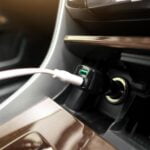Do I need a travel converter for Italy? When traveling to a new country, one must consider the differences in electrical systems and outlets. Italy, with its unique voltage, frequency, and outlet types, may require travelers to use a travel converter to power their electronic devices safely. In this article, we will explore the importance of travel converters and specifically address the need for travelers visiting Italy.
Understanding Italy’s electrical system is crucial for any traveler. The voltage used in Italy differs from that of many other countries, as do the outlet types. Without a travel converter, using electronic devices such as smartphones, cameras, laptops, or hair dryers can be risky and may result in damage to the devices or even pose safety hazards.
To provide a comprehensive understanding of this essential topic, this article will discuss Italy’s electrical system and the potential consequences of not using a travel converter when traveling to the country. Furthermore, we will explore different types of travel converters available and offer tips on purchasing a reliable one for safe use in Italy. Additionally, we will discuss alternative options for powering devices and provide useful tips for safe and efficient use of travel converters while visiting Italy.
Understanding Italy’s Electrical System
When traveling to Italy, it is essential to understand the country’s electrical system and the need for a travel converter. Italy, like many European countries, uses a different voltage and outlet type compared to North America and other regions. Understanding these differences can help travelers avoid potential electrical mishaps and ensure their electronic devices work properly during their trip.
In Italy, the standard voltage is 230 volts with a frequency of 50 Hertz. This differs from the 120 volts and 60 Hertz used in North America. Additionally, Italy typically uses Type F outlets with two round pins, which may not be compatible with the flat blade plugs commonly used in other countries. Therefore, it is crucial for travelers to utilize a travel converter to adapt their electronic devices to Italy’s electrical system.
When packing for a trip to Italy, it is important to consider the electronic devices you plan to bring along. Common items such as smartphones, cameras, laptops, and hair dryers are essential for many travelers. However, these devices may not be compatible with Italy’s electrical system without the use of a travel converter. Without proper conversion, there is a risk of damaging your electronic devices or causing an electrical hazard in your accommodation.
To avoid these potential risks and ensure safe operation of your electronic devices in Italy, it is highly recommended to invest in a reliable travel converter. By using a travel converter specifically designed for Italy’s voltage and outlet types, travelers can mitigate the dangers associated with incompatible electronic devices. Whether purchasing online or at physical stores, travelers should look for converters that are suitable for use in Europe and comply with safety standards to ensure their effectiveness while abroad.
- Unpacked plug adapter
- Purchased Powerbank
- Notify international Debit card
Devices to Consider
When traveling to Italy, it’s essential to consider the electronic devices you’ll be bringing along and how they will operate in an unfamiliar electrical system. Italy operates on a 230-volt supply voltage and 50 Hz frequency, which may differ from what your devices are designed for. It’s important to determine whether or not you need a travel converter for Italy to ensure that your electronic devices function properly and safely during your trip.
Here are some common electronic devices that travelers typically bring when visiting Italy:
- Smartphones: Whether it’s for staying connected with loved ones back home or navigating through unfamiliar streets, smartphones are a must-have for many travelers. Since smartphones are usually equipped with adaptable chargers, they may only require a plug adapter to fit into Italian outlets.
- Cameras: From capturing iconic landmarks to documenting memorable moments, cameras are indispensable for many travelers. Depending on the model of your camera, it may require a travel converter if its voltage rating doesn’t match Italy’s electrical system.
- Laptops: For those who need to work remotely or simply want to stay entertained during downtime, laptops are commonly brought by travelers. Most modern laptops are designed to be compatible with different voltages and frequencies, but it’s crucial to double-check before plugging them in.
- Hair Dryers: Personal grooming tools like hair dryers often accompany travelers on their trips. Hair dryers typically have heating elements that require careful consideration when used in another country with a different electrical system. If your hair dryer doesn’t support 230 volts and 50 Hz, using it without a travel converter could result in damage or safety hazards.
Before packing these devices for your trip to Italy, take the time to research whether you need a travel converter based on each device’s voltage and frequency requirements. It’s always better to be prepared than to encounter potential issues once you arrive at your destination.
Consequences of Not Using a Travel Converter
When traveling to Italy, it’s important to be aware of the potential risks and dangers of using electronic devices without a travel converter. Italy operates on a 230-volt electrical system with a frequency of 50 Hertz, which may differ from what travelers are accustomed to in their home countries. Without the proper voltage conversion, electronic devices such as smartphones, cameras, laptops, and hair dryers could be at risk of damage when plugged into Italy’s electrical outlets.
One of the main consequences of not using a travel converter in Italy is the possibility of damaging your electronic devices. Most electronic devices are designed to operate within specific voltage ranges, and plugging them into a higher or lower voltage than they are designed for can lead to permanent damage. In addition to damaging your devices, there is also the risk of electrical hazards such as sparks and short circuits if the voltage is not properly regulated.
Using a travel converter designed for Italy’s electrical system can help protect your devices and ensure safe and efficient operation during your travels. There are various types of travel converters available, including step-down converters for devices that require a lower voltage than what is supplied in Italy, as well as universal adapters that can accommodate multiple types of plugs and voltages.
It’s important to select the right type of converter based on the specific electronic devices you plan to use during your trip.
In order to avoid any potential risks associated with using electronic devices in Italy, it’s essential to invest in a reliable travel converter before embarking on your journey. This will not only protect your devices but also provide peace of mind knowing that you can safely use your electronics without worrying about compatibility issues or electrical mishaps.
| Consequences | Potential Risks |
|---|---|
| Damaged Electronic Devices | Permanent damage due to incorrect voltage |
| Electrical Hazards | Sparks and short circuits |
Types of Travel Converters
When traveling to Italy, it’s important to be aware of the different types of travel converters available to ensure that your electronic devices can safely and efficiently operate. Italy has a unique electrical system that differs from other countries, so having the right travel converter is essential in order to prevent potential damage to your devices.
Types of Travel Converters
There are several types of travel converters on the market, each designed for specific electrical systems. It’s important to choose a converter that is suitable for Italy’s electrical voltage and frequency. One type of converter is the simple plug adapter, which allows you to plug your device into Italian outlets. However, it does not convert voltage or frequency, so it may not be sufficient for certain electronic devices.
Another type of travel converter is a voltage converter, which can convert the voltage from 220-240 volts down to the standard 110-120 volts used in the United States. This type of converter is necessary if you plan on using devices that are not dual voltage-compatible, such as hair dryers or curling irons.
Suitable Converters for Italy
For travelers visiting Italy, it is recommended to use a high-quality universal travel adapter and converter that can handle both the voltage and outlet type. Look for converters specifically labeled as suitable for European systems and compatible with Italy’s Type L outlets. Additionally, consider purchasing a converter with built-in surge protection to safeguard your electronic devices from power spikes.
By understanding the types of travel converters available and selecting one that is suitable for Italy’s electrical system, you can ensure that your electronic devices will work safely and efficiently during your trip.
Buying a Travel Converter
When traveling to Italy, one of the most important things to consider is how to properly power your electronic devices. Without a doubt, using the right travel converter is essential for safely and efficiently using your devices in Italy. In this section, we will provide tips and recommendations on where to purchase a reliable travel converter for Italy, including both online and physical stores.
Online Stores
For travelers who prefer the convenience of online shopping, there are several reputable websites where you can find a wide selection of travel converters specifically designed for Italy’s electrical system. Websites like Amazon, REI, and Best Buy offer a variety of options at different price points, allowing you to browse and compare products before making a purchase. It is essential to read reviews and check the product specifications to ensure that the travel converter meets your specific needs.
Physical Stores
If you prefer to see and touch the product before purchasing it, visiting a physical store may be the best option for you. Many electronics retailers carry travel converters in their stores, including big names such as Walmart, Target, and Best Buy.
Additionally, specialty travel stores like The Container Store or Brookstone may have a more extensive selection of travel converters specifically tailored for international travel. Visiting these stores allows you to ask questions and seek advice from knowledgeable staff members who can help you choose the right travel converter for your trip to Italy.
Specialty Travel Stores
In addition to larger retail chains that offer travel converters as part of their electronics departments, there are specialty travel stores that cater specifically to travelers’ needs. These stores often carry a wide range of travel accessories designed for international trips, including adapters, converters, voltage regulators, and more. Visiting one of these specialty shops may provide you with expert advice on choosing the best travel converter for your specific devices and power requirements in Italy.
Travel Converter Alternatives
When traveling to Italy, it is essential to consider how you will power your electronic devices. While a travel converter is a popular choice for many travelers, there are other options to consider that may better suit your needs. In addition to travel converters, voltage converters and plug adapters are alternative solutions for safely and efficiently powering your devices in Italy.
Voltage converters are a viable option for travelers who are concerned about the differences in voltage between their home country and Italy. Italy operates on a 230-volt system, while countries like the United States use a 120-volt system.
Using electronic devices designed for a 120-volt system in Italy without a voltage converter can damage the devices or pose safety risks. Voltage converters allow you to step down the voltage to match that of your device’s requirements, ensuring safe and proper operation.
Plug adapters are another alternative solution for powering devices in Italy. The electrical outlets in Italy are Type F sockets, which differ from the Type A and Type B sockets commonly found in the United States.
A plug adapter allows you to physically adapt the shape of your device’s plug to fit into the Italian electrical outlets. While plug adapters do not change the voltage or frequency of the electrical current like travel or voltage converters do, they provide a simple solution for connecting your devices to Italian outlets.
| Device | Recommended Converter/Adapter |
|---|---|
| Laptop | Voltage Converter |
| Smartphone | Plug Adapter |
| Hair Dryer | Travel Converter |
Tips for Safe and Efficient Use
In conclusion, when traveling to Italy, it is essential to consider the need for a travel converter. The electrical system in Italy operates on a different voltage and frequency compared to other countries, which can potentially damage electronic devices if not properly addressed. As discussed, common electronic devices such as smartphones, cameras, laptops, and hair dryers may require a travel converter to function safely in Italy.
Using electronic devices without a travel converter in Italy can have serious consequences. Not only does it pose a risk of damage to the devices themselves, but it can also lead to potential safety hazards. Therefore, it is crucial for travelers to be aware of Italy’s electrical system and take the necessary precautions to ensure the safe and efficient operation of their electronic gadgets.
When purchasing a travel converter for Italy, it is important to consider the specific type that is suitable for the country’s electrical system. It is recommended to research and invest in a reliable converter that meets the requirements for Italy’s voltage and outlet types.
Additionally, travelers should also explore alternatives such as voltage converters and plug adapters as backup power options for their electronic devices while in Italy. By taking these precautions and following practical advice on using travel converters in Italy, travelers can avoid electrical mishaps and ensure the smooth operation of their electronic devices during their trip.
Frequently Asked Questions
Do I Need a Converter or Adapter for Italy?
When traveling to Italy, you will need both a plug adapter and a voltage converter. This is because Italy uses a different type of plug than the US, and the voltage is also different.
Do I Need a Voltage Converter to Charge My Phone in Italy?
If you are charging your phone in Italy, you will likely not need a voltage converter as most modern smartphones and devices can handle the 220-240V electrical system used in Italy. However, you will still need a plug adapter to fit into Italian outlets.
Do I Need a Converter When Traveling to Europe?
When traveling to Europe, it’s important to check the specific country’s electrical systems. In general, many European countries use 220-240V systems, so a voltage converter might be necessary for certain devices from the US. Additionally, a plug adapter will also be needed due to different outlet types across Europe.

I’m a passionate traveler, writer, and Italophile. My fascination with Italy’s history, art, and culture has led me on countless adventures across the Italian landscape. Through “I Live Italy,” I share my love for this extraordinary country and aims to inspire others to explore its boundless beauty.





